Watercolour is often a misunderstood art form.
As a result, there are many watercolour myths in the art community that are untrue or grossly over-exaggerated.
And sometimes, these perpetuated myths hold back artists from painting with watercolours.
That’s why, in today’s article, I’m debunking 9 common watercolour myths in order to:
- Dispel limiting beliefs that prevent artists from pursuing watercolour painting as a hobby or career
- Educate artists about the misinformation they may have received
- Encourage artists to look past false misconceptions of watercolour painting so that they can be more informed
When you’re done reading, you’ll be able to tell fact from fiction like a watercolour pro!
DISCLOSURE: This post contains affiliate links. If you make a qualified purchase using any of the links, I will earn a small commission at no extra cost to you. I appreciate every sale because it allows me to create free content that supports the growth of this website.
Table of Contents
Watercolour Myths 1: Watercolour is Hard
You might have wondered at some point: I love watercolour paintings, but what are the disadvantages of watercolour?
And I bet you heard: Watercolour is too hard to learn.
However, I would like to challenge the common belief that watercolour is a hard medium to learn.
You see, watercolour takes artists on an unpredictable journey because watercolour has a mind of its own. As a result, controlling the water to paint ratio can be tricky.
But once you practice and learn some skills, you develop the muscle memory to manipulate watercolour to your desire.
Therefore, while watercolours can be difficult to learn for some people, it’s definitely not true that all artists struggle to paint with watermedia.
For some artists, watercolour painting will be the most challenging art form to learn. And for others (like myself), it’s fairly easy to learn.
For more information on how to excel at watercolours, check out this article that discusses if it’s hard to learn watercolour painting.
Myth 2: Beginners Should Only Use Student Grade Supplies
Ah yes, this is an extremely common watercolour myth.
As a beginner, it’s important to make sure that you invest in a decent paints and brushes. After all, you don’t want to own cheap dollar store paints or brushes. Otherwise, you’ll get dollar store results.
However, when choosing the best watercolour supplies to buy, you should definitely invest in high-quality watercolour paper.
Investing in 100% cotton paper will make the learning process so much smoother. Thus, the learning experience will be a lot easier and more enjoyable.
Learn from my grave mistake: I bought the cheapest wood pulp paper and it drove me absolutely nuts!
Painting on low-quality paper is frustrating and stressful because the paper tears and buckles too easily. For this reason, it could discourage you from learning to paint with watercolours.
Takeaway: While you don’t need the fanciest artist grade supplies as a beginner, stay away from the super cheap supplies and at least invest in high-quality paper. My favourite watercolour paper is Arches 100% cotton paper.
Myth 3: Acrylic Brushes Can Be Used in Watercolour Painting
How on Earth did this misconception become a common belief?
I wonder how many beginner watercolourists believed this watercolour myth when they first started painting with this medium?
You see, good watercolour brushes are usually soft and designed to absorb water. This way, watercolourists can paint for longer periods of time without having to constantly reload their brushes.
The benefits of a good watercolour brush include:
- Thirsty brushes absorb more water and paint
- Soft bristles are easy to paint with
- Pointed brush tips allow for greater brushstroke variation
- Some brushes have good snap
- The handles are typically shorter and easier to handle
On the other hand, acrylic brushes have a completely different structure because the bristles need to be sturdy enough to handle the viscosity of thick acrylic pigment.
As you can see, painting with acrylic brushes is not the best idea because the watercolour pigment will not lay down or behave properly when applied with the harsher bristles of an acrylic brush.
So if you want a detailed breakdown of the differences between acrylic, oil, and watercolour brushes, check out this detailed article by JustPaint.com.
Although, in all technicality, I suppose you could paint with acrylic brushes if you really had no other option. However, I would not recommend it because you won’t get the results you desire.
Takeaway: Be smart and invest in a decent set of watercolour brushes in order to save yourself tons of unnecessary stress and frustration. I love and recommend the Silver Black Velvet brushes.
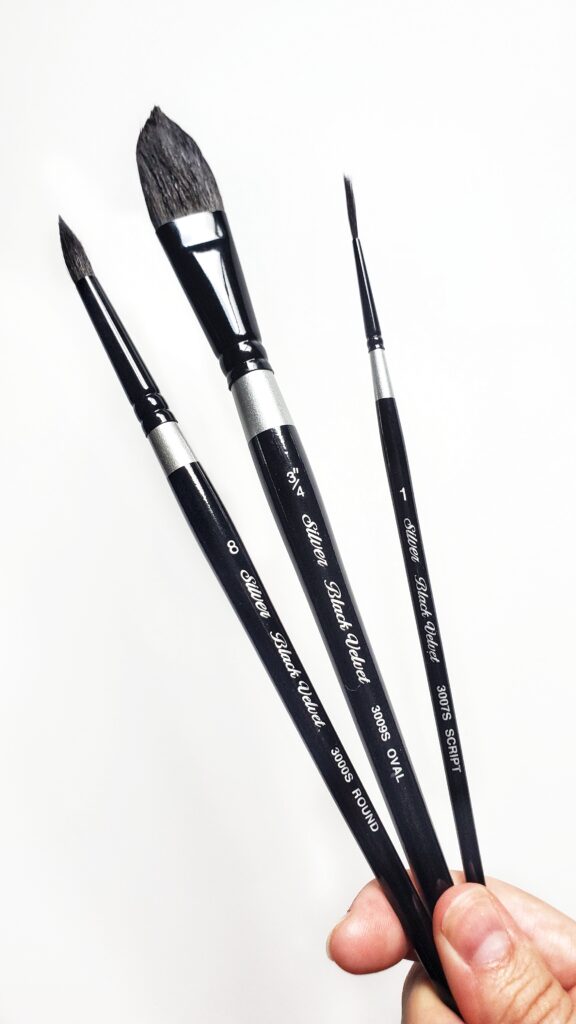
Myth 4: Watercolourists Should Never Use White Paint
Oh boy, let’s address a big controversial debate in the watercolour community!
Traditionally, watercolour painters stay away from white paint. Instead, they rely on the white of the paper to show through the transparent layers.
However, many modern painters find this to be an outdated method, and so they opt to incorporate white paint into their paintings.
Technically speaking, is there any hard and fast rule? No.
Whether you decide to use white watercolour paint in up to you.
Personally, I avoid it in most instances to let the white paper speak for itself. And if I want highlights, I’ll use the Winsor & Newton White Ink to add little details to a finished piece.
But if you feel more comfortable using white paint for your skill level, don’t let anyone talk you down for preferring to create art differently than they do.
Just keep in mind that learning to preserve the white of your paper will help you become a better painter faster.
Takeaway: It’s not the end of the world if you decide to use white watercolour paint in your artwork. After all, you’re the artist. You do you.
Myth 5: More Pigments Means the Palette is Better
Let’s be honest: contrary to what we’ve been told as children, less is often more. Let me explain how this teaching applies to watercolour.
Just because you buy a big palette with 36, 48, or over 60 different paints, doesn’t mean that set is inherently better.
If anything, having too many pigments has 3 noticeable drawbacks:
- You’ll suffer from decision fatigue because there are far too many pigments of slightly varied shades to choose from
- You’ll rely too much on having a pre-mixed colour prepared for you, so you neglect to learn how to mix watercolour paints properly
- You’ll spend a lot more money on a fancy palette than is necessary, especially if you’re a beginner artist
When you have too many paints, you end up having too many colours with different pigment properties. This means you’re more likely going to create muddy colours.
And then you’ll have no choice but to learn about pigments to avoid muddy colours.
So, if I were you, I would focus on purchasing a modest watercolour paint set, especially as a beginner.
That way, you can spend more time learning about colour mixing and waste less time choosing from such a wide selection of pigments.
Takeaway: Fewer paints encourages you to learn how to mix colours properly. This way, you’ll be more likely to focus on colour theory. An affordable and limited watercolour palette is the Winsor & Newton Cotman Set of 12.
Myth 6: Throw Away Leftover Dried Paint
Nooooooo! Don’t ever throw away dried paint! If you do, you’re basically flushing money down the drain for no good reason.
Unbeknownst to many watercolour beginners, dried watercolour paint can actually be reactivated! Cool, right?
Since watercolour is based on water-soluble pigments, once it has dried it can be reactivated with water. That means any leftover paint is perfectly fine to use, even if a few days have passed.
To preserve the integrity of your paints, simply close the mixing palette to prevent dust or other particles from getting into the paint.
Then, when you’re ready to paint once again, lift the lid off and get to work. Easy-peasy!
In addition, it should be noted that this same principle applies to those of you who paint with gouache, which is often referred to as opaque watercolours.
Takeaway: Don’t waste your valuable paint by washing them away once they’ve dried. Nothing has changed the quality of the paint pigments themselves. Just leave them alone and revisit them when you’re ready to continue painting.
Myth 7: Granulation is a Sign of Cheap Paint
I’m not going to lie but… I believed this watercolour myth back when I was just getting started with watercolours.
For whatever reason, I was under the impression that granulating paints somehow equated to lower quality pigment.
In case you don’t know, granulating watercolours are pigments that appear unevenly distributed. As a result, the paint dries and creates a texture that can look like grains or groups of dots.
Maybe that misconception stemmed from the fact that the vast majority of watercolour paintings I had seen at that point in my art career didn’t incorporate granulation in the watercolour process.
To learn more about granulating watercolours, check out this article by Jacksonart.com in which you can see tons of examples of granulation in lovely watercolour paintings.
But you see, granulation can add a lot of unique textures.
Takeaway: Before you knock granulating paint, take some time to experiment with these paints. Explore how other watercolour artists have incorporated these pigments into their own unique art styles.
Myth 8: Watercolour is Unforgiving
Whether you’re painting outside en plein air, in the comfort of your room, or in a cozy studio, this unforgiving stereotype seems to get propagated everywhere.
This watercolour myth largely stems from artists comparing watercolour to other painting mediums such as acrylic and gouache.
Since acrylic and gouache paint are thicker and dry with a matte finish, they are easier to cover up. That means if you make a mistake, it’s really easy to cover up the error in the painting.
However, due to watercolour’s transparent nature, it can be a little bit more difficult to fix or cover up mistakes.
Why?
Because mistakes will show through the transparent layers. This transparency is what is so special about watercolours.
That being said, watercolour doesn’t deserve to be labelled “unforgiving” in direct comparison to other art forms.
Sure, it may appear unforgiving to untrained eyes and unskilled hands. But once you begin practicing, you’ll develop the expertise to correct any mistakes you may make in your paintings.
Takeaway: When you get to the nitty-gritty of it, you can learn how to use watercolour techniques to fix mistakes just like any other art form. The trick is to learn how to cover up mistakes cleverly.
Myth 9: Only Creative People Can Be Good Artists
This watercolour myth is the greatest limiting belief I’ve ever heard artists say!
Thinking that only creative people can become good artists holds back many aspiring artists from even attempting simple watercolour tutorials or drawing exercises because they don’t feel worthy of even trying.
All people—whether they be artists, athletes, musicians, chefs, and so on—all started off as beginners with 0 skills and expertise.
As they practiced their crafts, they developed the skills that enabled them to progress and become more capable of performing their craft.
The point I’m trying to make is that the debate about whether talent exists or not is irrelevant in the grand scheme of things.
In other words, think of it like this:
Talent is subjective; practice is not
After all, talent doesn’t automatically make you stellar at any particular skill. Consistent practice, hard work, and determination to succeed will make you successful at anything you put your mind to.
Therefore, you must do away with the silly notion that you won’t succeed at watercolour painting because “you’re not talented or creative enough.”
If you overcome this limiting belief and dedicate time to learning how to paint, you might surprise yourself when you realize that you are just as capable of becoming a great artist like anyone else.
Takeaway: Nothing is holding you back from pursuing watercolour art than your own limiting beliefs. Dispel them, and you’ll quickly see that this watercolour myth couldn’t be further from the truth.
Conclusion
There you have it: I’ve debunked 9 common watercolour myths that are, at the heart of them, completely false and unfounded.
Maybe you already knew some of these myths were false. And perhaps some of them surprised you.
Heck, you might even completely disagree with some of them! In which case, I’d love to know the reasons for which you disagree.
Either way, you now have the knowledge to acknowledge watercolour painting with a more informed opinion.
And if you’re having trouble letting go of some of these limiting beliefs, I encourage you to challenge any of these myths to see for yourself whether any of them hold true in your experience.
Did you ever believe any of these watercolour myths? Do you believe any of them are actually true? Share your thoughts in the comments below!
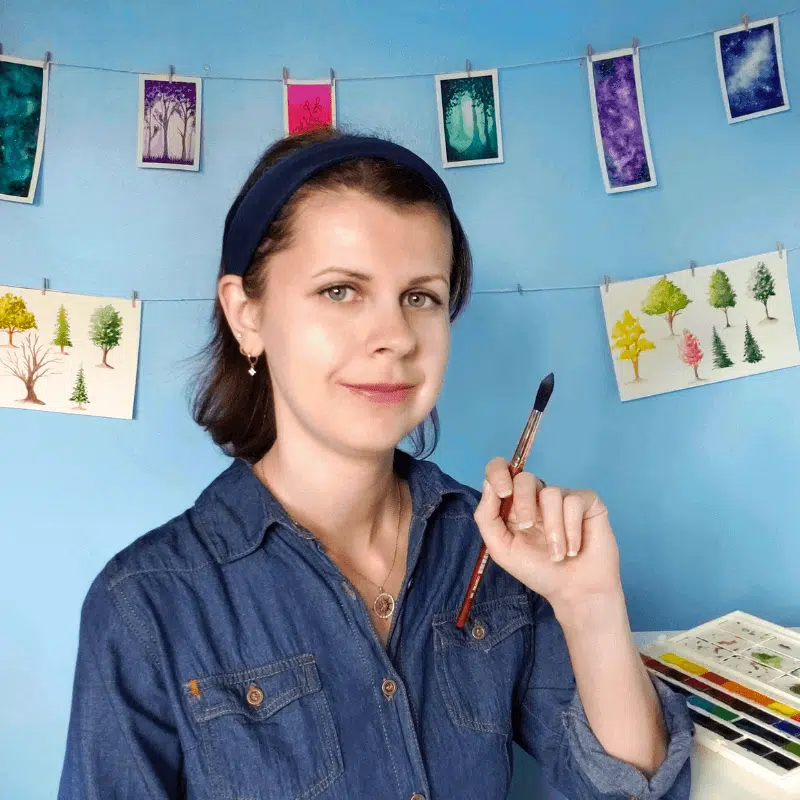
Miranda Balogh
Artist & Online Educator


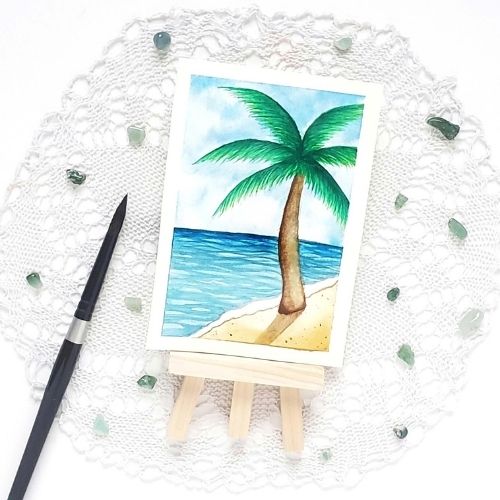
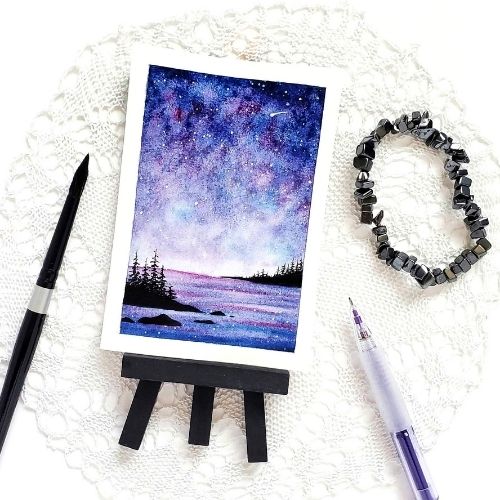
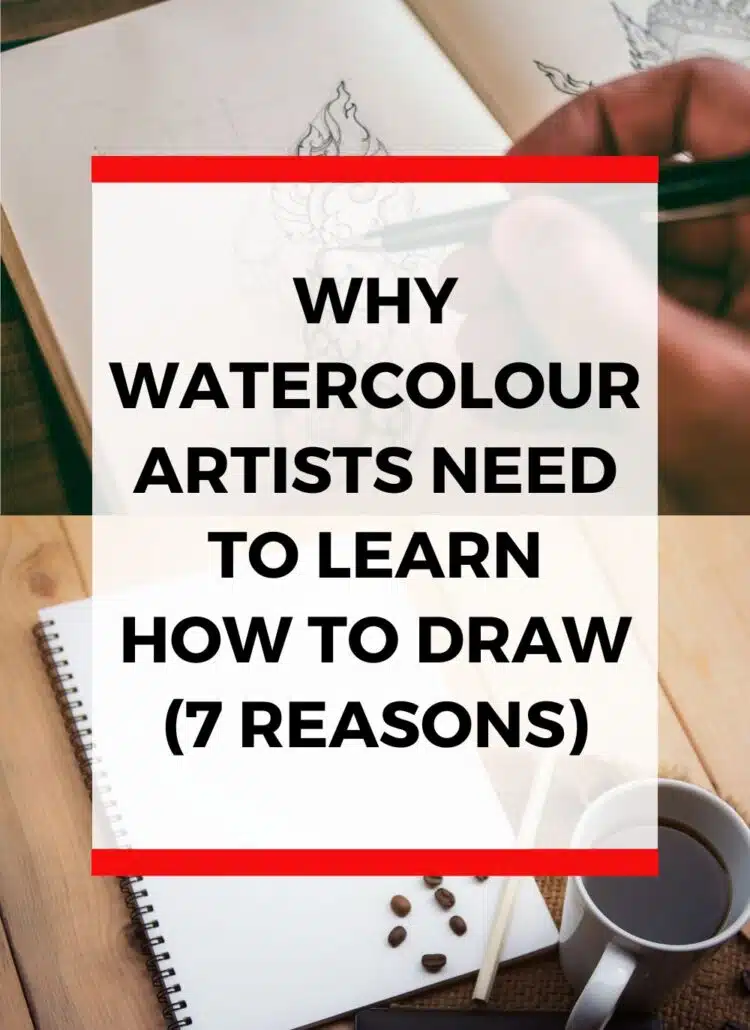
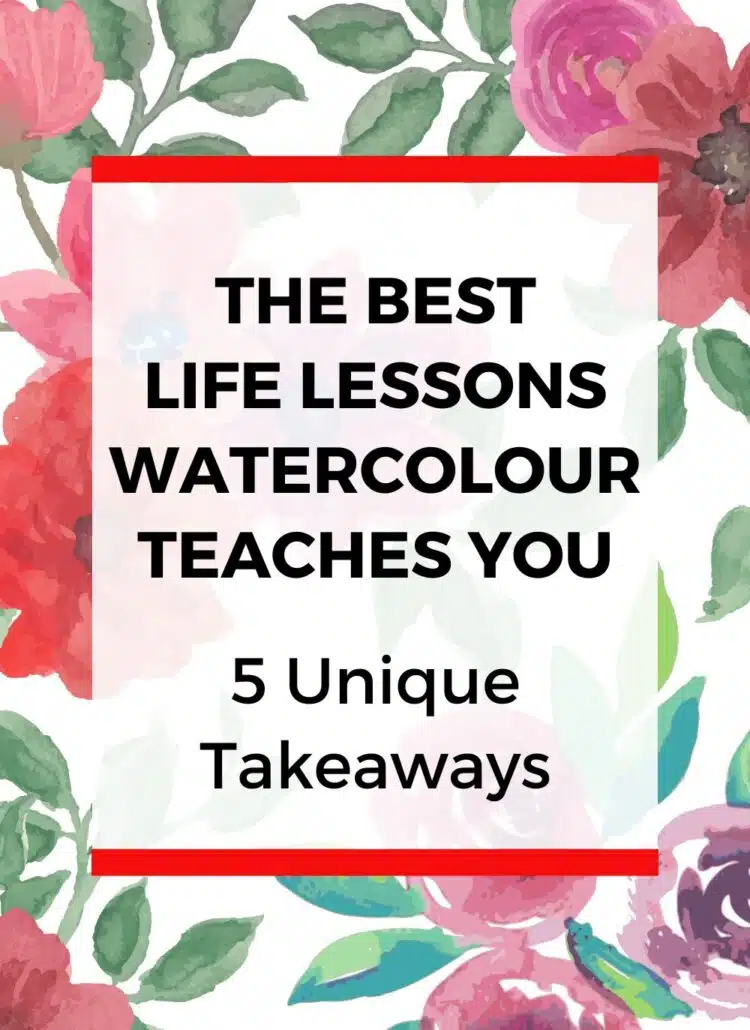
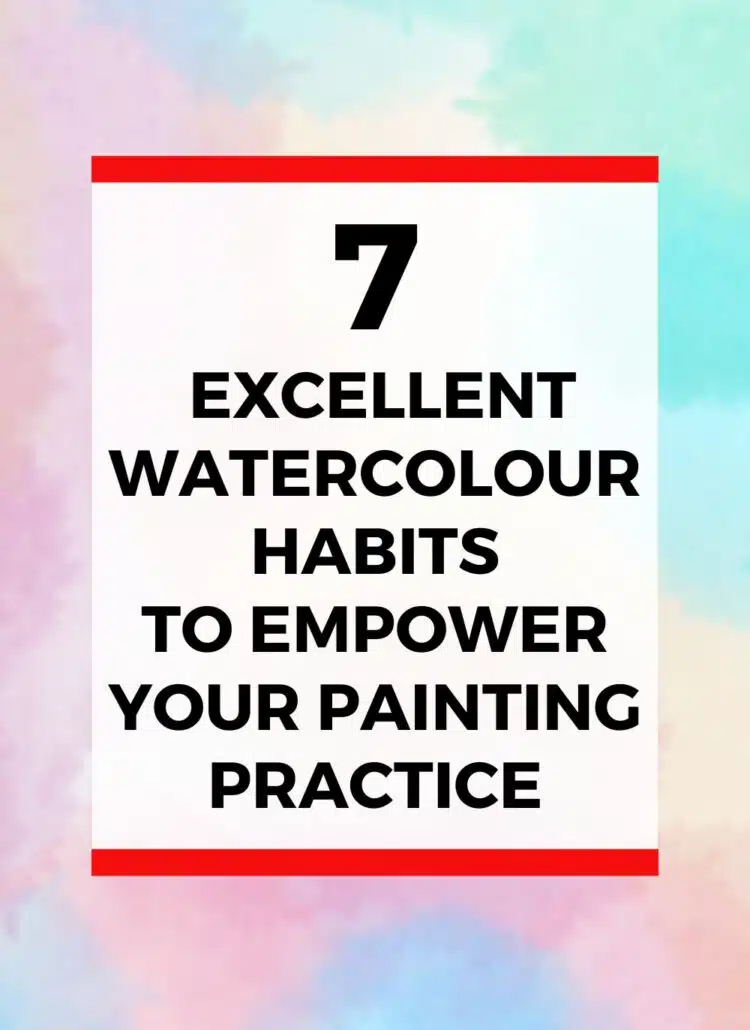

I love your explanation of the watercolour brushes, that makes so much sense. I remember in elementary school I would have to reapply paint to the brush after pretty much every stroke. We probably had the wrong brushes!
It’s really amazing that you remember that little detail from all the way back in elementary school! Thanks for sharing your experience.
I was today years old when I learned that you need specific brushes for painting watercolors. Thanks for lots of good info.
You’re welcome! It’s true that using the right brushes will make the watercolour painting process so much easier.
That’s so interesting that you can reactivate dried out paint and reuse it! Of course, now that you think about it, it makes sense, but I have just never thought about it before. Thanks for the tip!
I’m glad you learned something new from these watercolour myths! Thanks for sharing your thoughts.
This is honestly so encouraging! Thanks for taking the time to share! Pinning it now.
Thank you so much for the pin! I really appreciate it.
Great article. I was into watercolour when i was younger. Need to start doing it again. Thanks for busting all the myths.😊
Thank you for taking the time to read this article and for leaving a thoughtful comment!
I had no idea about Myth 3. I would have made the same mistake. I know that not just any ol’ brush will work, but I had no idea there were brushes specifically for watercolor. I should have. I’ll fall on my sword now.
Thanks for the great article. You explain things very well, and I learn more about watercolor with every article.
I’m glad you learned something new from these watercolour myths! As well, thank you for taking the time to read this article and leave a thoughtful comment. I appreciate it!
Great list! I’m venting into watercolours with the kids this summer. It might be less messy than acrylic…. but I’ll keep this post handy to help them learn! Thanks!
That sounds like it will be a fun and lovely family activity!